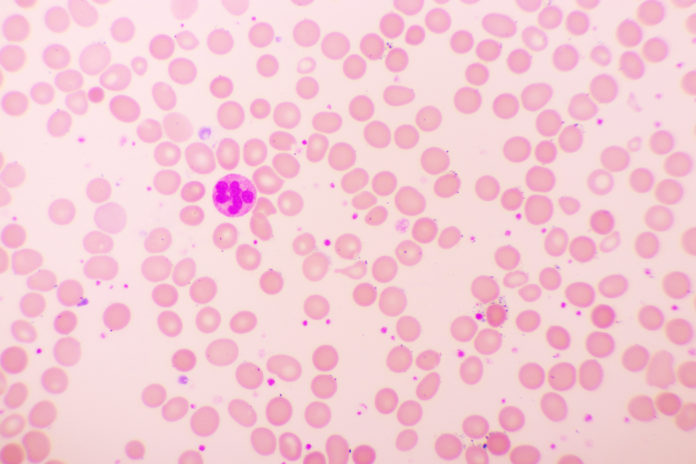What can happen if your platelet level is too high, and how can it be treated?
Thrombocytosis occurs when there are too many platelets in your bloodstream. It can be of two types: primary and secondary. This condition commonly occurs in older people aged 60 and above.
What is Thrombocytosis?
Platelets or thrombocytes are cells present in our blood that come together to form clots and prevent bleeding. They are made in the bone marrow (sponge-like tissue inside the bones). Having too many platelets can lead to severe complications such as a heart attack, stroke, or clotting in the blood vessels. For pregnant women, blood clots in the placenta can cause a miscarriage or problems with fetal development.
Under normal conditions, your blood clots stop massive loss of blood from an injury. In patients with primary or essential thrombocythemia, clots form suddenly and for no apparent reason. This can block the flow of blood to essential organs such as the brain, liver, and heart. Though the bone marrow is known to have certain gene mutations, the cause for primary thrombocytosis is unknown.
Secondary or reactive thrombocytosis is caused by another underlying condition/infection. This can include acute bleeding, anaemia (iron deficiency), cancer, inflammation disorders such as rheumatoid arthritis, or surgery like splenectomy (spleen removal).
Essential or primary thrombocythemia poses a much greater risk of clotting or bleeding complications. However, secondary thrombocytosis accounts for 80-90% of the cases.
What are the Symptoms of Thrombocytosis?
People with this condition generally show no signs or symptoms. In cases of reactive thrombocytosis, the symptoms are closely related to the underlying condition in question. Some typical symptoms related to blood clots include:
- Headaches.
- Dizziness.
- Weakness.
- Chest pain.
- Numbness in the hands and feet
Some other signs may include bruising of the skin and unexplained bleeding from the nose, mouth, gums, and stomach. As thrombocytosis is not likely to lead to any symptoms, schedule regular blood tests to keep a check on your platelet count.
.
Call 1860-500-1066 to book an appointment.
How is Thrombocytosis Diagnosed?
During a routine physical exam, your doctor may discover that your spleen is enlarged or notice other signs from a pre-existing condition. In such cases, a complete blood report is needed to determine if your platelet count is higher than usual.
This test is generally repeated over a period, as certain conditions can temporarily lead to a higher platelet count (like excessive alcohol use or a lack of vitamin B12).
Tests may also be ordered to check for:
- Markers (a measurable indicator of the presence of a disease) of inflammation.
- Undiagnosed cancer.
- Abnormal levels of iron in the blood.
- Associated gene mutations.
Sometimes, a small sample of your bone marrow may also be used to arrive at a better diagnosis.
What are the Treatment options for Thrombocytosis?
In primary or essential thrombocythemia, a low dose of aspirin daily may be recommended by your doctor. This can help with thinning the blood if the risk for blood clots is high. You might be required to take this if you:
- Are above the age of 60.
- Have risk factors for a heart condition.
- Have a history of blood clots.
- Have a platelet count higher than 1 million.
Your doctor might prescribe platelet-lowering drugs primarily in the form of hydroxyurea) or interferon alfa.
In emergency cases, platelets can be removed from the blood by a method similar to dialysis. A needle along with a tube is placed inside your vein, and your blood then goes through a machine that filters out the platelets. The filtered blood is then returned to your body through an IV line.
For secondary thrombocytosis, the underlying cause needs to be treated first. If there is significant blood loss from an injury, the elevated platelet count often resolves on its own. In inflammatory disease, the count will remain high till the cause for inflammation is not controlled. If you have had your spleen removed, you are likely to have lifelong thrombocytosis.
Often, people who have no symptoms may only require routine check-ups from their physician. Secondary forms rarely require treatment.
Request an appointment with the top Hematologists at Apollo Hospitals.
Frequently Asked Questions (FAQs)
Q: What is the difference between Thrombocytosis and Thrombocythemia?
The term Thrombocythemia is preferred when the reason for an elevated platelet count is unknown. Hence, thrombocythemia is associated with the primary or essential type, whereas thrombocytosis is used when describing the secondary or reactive form.
Q: Can this condition be fatal?
Thrombocytosis does not usually shorten life expectancy. With proper medical intervention, complications can be treated or prevented. After many years of living with thrombocytosis, bone marrow fibrosis (scarring) can occur in some cases. In a very small percentage of patients, it can also lead to leukaemia.


















